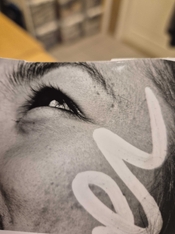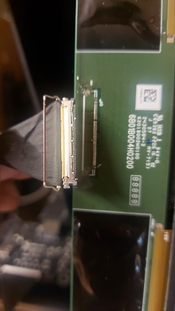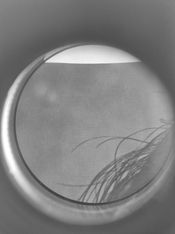I was thinking of picking up a 16k display and the Raspberry Pi 5 and dive into this rabbit hole myself

I was wondering if you would mind sharing some info about what OS image/config you used to get the display running on the Pi
@Ethan Brossard ?
I am running the Pi 5 with the standard Raspberry Pi OS. There is one config file I had to modify to get the display to run on it, I believe it is /boot/firmware/cmdline.txt I can't remember the exact code I added to it, and the pi is in the darkroom at work currently, but I'll try to remember to get it soon.
There are a few things to keep in mind about the 16k display:
- It only has a bit depth of 3, so can only display 8 tones of gray. This leads to an extremely posterized image if you want to use it straight out of the box.
- The way it reads data, to get a group of 8 grayscale pixels, you have to encode them properly into a single 24-bit RGB pixel
- The pixels aren't square, so you need to give it a "stretched" image in order for the image to render properly
- As best as I can tell, the display functions sort of like two 8k displays next to each other, and where they meet in the middle you can get some weird overlapping / glitching if you don't modify the image you send the display properly
I'm working on software to get around all those issues, and it works, but at the moment its very much not user friendly and likely wouldn't be usable by anyone but me. Hopefully in the next couple months I'll have a user friendly version ready.
Once it's ready, I'm planning to go into production with it on a very small scale. I've already had a few people reach out to me about purchasing it. My initial plan was to build a negative carrier unit which could be installed in existing 8x10 enlargers, but Beseler has a patent from several years ago for a digital enlarger negative carrier that fits into existing enlargers. I'm not fluent enough in legalese to know if it would prevent me from selling a digital negative carrier, but there's a chance I'd have to sell it as a whole enlarger rather than just a negative carrier.










